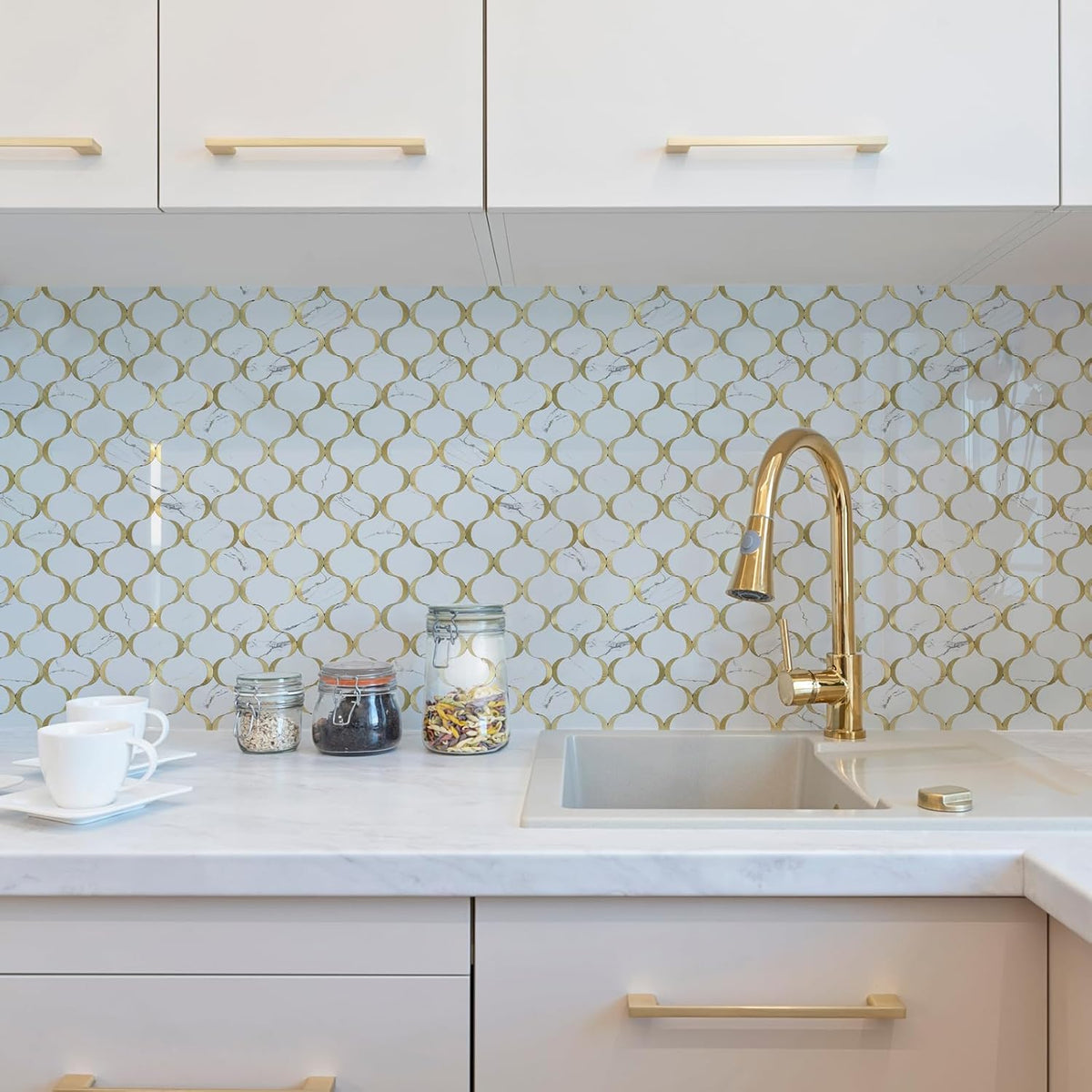
How to Protect Peel and Stick Tile from Splatters & Scratches
|
|
Time to read 5 min
|
|
Time to read 5 min
Peel and stick tiles are aesthetically pleasing and easy to install. Whether they are installed in the bedroom or kitchen, they help elevate the visual appeal of the space.
However, the real work starts right after the installation. Peel and stick tile require adequate maintenance to protect them against any form of damage. The adhesive glue is vulnerable, and daily use makes the matter worse. Oil splatters are a big problem, particularly in the kitchen, as they cause stains and seep into the seams.
Similarly, water from the sink gets under the tile's edges, causing more trouble. Plus, when heavy objects like furniture legs or metals are dragged, scratching becomes inevitable.
This ultimately results in unattractive stains, tiles being lifted up at the edges, and fading colours. These scratches ruin the smooth look of your peel and stick tiles. This damage weakens the tiles' hold and shortens their lifespan. For instance, peel and stick tiles can last between 5 and 25 years, but with constant damage, their lifespan is reduced by half.
This post discusses daily protection strategies, sealants and cleaning techniques to maintain the integrity of your tiles.
Want to know more? Visit our store.
Use an anti-oil film behind your cookers or stoves. An example is a transparent PP film that can block grease splatters. Additionally, apply waterproof sealants such as silicone glue to seal the sink area and prevent water from seeping under the tiles and warping.
The use of felt pads on furniture legs is important. It distributes weight and prevents scratches during movements. Put a non-slip mat, such as cotton carpet, at the entrance to your kitchen, sitting room, dining room and other high-frequency areas.
Do not drag sharp objects such as knives and scissors across the tile surface. Clean up spills and stains from coffee, oil, and sauce as soon as they occur, as leaving them for more than 20 minutes can cause a permanent stain on the tile.
Apply two coats of water-based polyurethane. Polyurethane is waterproof, stain-resistant and best for kitchen backsplashes.
Fill the gaps within the tiles with epoxy grout to prevent dirt, stains and liquid from penetrating the gaps.
Use a neutral pH cleaner such as Bona Hardwood floor cleaner, as it won't harm the adhesive.
Alternatively, you can make a homemade solution of white vinegar and warm water in a ratio of 1:4 or a mild dishwashing soap.
Use a microfiber cloth and not abrasive pads or steel wool to wipe in circles
Next, use a slightly damp mop on the floor and dry the floor.
With shorter days in autumn and winter, visibility becomes a critical safety concern for runners. Opt for bright colors and reflective gear to ensure you're easily seen by motorists and other trail users. Consider adding reflective strips to your shoes, wearing a high-visibility vest, or using clip-on LED lights. Remember, being visible isn't just about being seen from the front - make sure you're visible from all angles, especially in low-light conditions.
How do we prevent accidents because they will always occur? It's by addressing small issues quickly and stopping them from becoming big issues.
These are minor scratches that can be hidden. Apply a tile repair wax that matches the colour of your tile. Rub the wax into the scratch and buff it to give a smooth look.
Deep scratches penetrate the tiles more deeply and cannot be repaired with repair wax. The best solution is to replace the affected tiles. This is why it's important to keep spare tiles. Be careful when lifting the damaged tile to prevent further damage.
Carry out preventive inspections monthly or weekly, especially in high-risk areas.
Start by walking around your tiled area and observing the edges for any slight lifting. Pay more attention to the kitchen and bathrooms. These areas are prone to heat and humidity, so catching a lift makes repair easy.
Add a stainless steel baffle on the side of the stove to block direct oil spray.
Wipe the splashback tiles weekly with a mild degreaser such as Simple Green to remove all greasy film buildup.
Peel and stick tiles are not waterproof and shouldn't be used inside shower enclosures. However, if you must, use a waterproof SPC board.
Regular ventilation to prevent moisture is preferable in a humidity of less than 60%.
Peel and stick tiles can be used to cover furniture tops, but hot cups or bowls can leave heat marks.
Apply a clear self-adhesive PET film over the tiled surface. This film is heat resistant and prevents daily scratches.
Yes, but be gentle. Use your pH cleaner with a soft microfibre cloth. Avoid the use of harsh chemicals.
Yes, it makes it slightly more difficult. The sealants bind to the tile surface and may also bind to the subfloor around the edges.
Pet claw marks can be deep and tough. The first option is to fill minor scratches. If they are deep, it makes sense to replace the tiles.
Adapting your running outfit to the seasons doesn't have to be complicated. With the right knowledge and gear, you can enjoy comfortable, safe runs all year round. Remember, the best outfit is the one that allows you to focus on your run, not on what you're wearing. So gear up, step out, and embrace the joy of running in every season!


